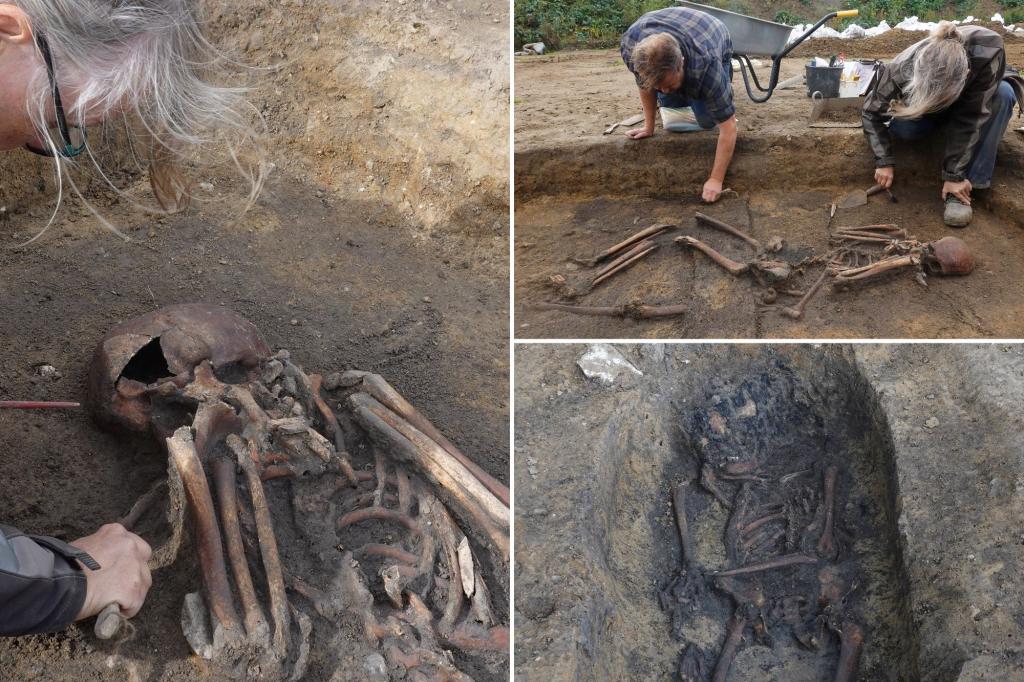Archaeologists from the Museum Odense, west of Copenhagen, have discovered fifty well-preserved Viking skeletons along with five cremated graves in the Danish village of Åsum. Museum curator Michael Borre Lundø stated that this find provides an opportunity for scientific analyses to reveal more about the general health, diet, and origins of those buried. These skeletons were buried with artifacts from outside the country, showing that they traveled internationally for trade. Sarah Croix, an associate professor at Aarhus University, mentioned that DNA analyses might be able to determine if the buried individuals were related, which has never been examined in similar graves before.
The exceptionally well-preserved skeletons were found due to high water levels and good soil conditions, preventing them from decomposing. This is a rare occurrence, as generally only a few teeth are left in Viking graves when excavated. The skeletons found in Åsum are nearly fully preserved, with all five fingers and toes intact, providing new opportunities for discoveries. Some of the skeletons were buried with items such as knives, brooches, glass pearls, and a wagon, suggesting a high status for these individuals. One woman was buried in the wagon she likely traveled in, with various valuable possessions such as a glass bead necklace, an iron key, and a knife with a silver-threaded handle.
Additionally, several graves in Åsum contained items that suggest connections to international trade networks during the Viking Age. A bronze three-lobed brooch, red glass, an iron knife, and a small piece of rock crystal were found in one grave, likely imported from Norway. The excavation took place as part of preparation for renovating an electrical grid. While some of the graves belonged to high-status individuals, the majority of the skeletons were from a farming community. The burial ground, covering around 2,000 square meters east of Odense, is believed to be from the 9th and 10th centuries.
The discovery of the well-preserved Viking skeletons in Åsum has provided a unique opportunity for researchers to conduct various scientific analyses to gain more insight into the lives, health, and origins of these individuals. By studying the artifacts found with the skeletons and conducting DNA analyses, it may be possible to determine relationships between the buried individuals and their connections to international trade networks during the Viking Age. The excavation has shed light on the burial practices of Vikings in Denmark and has the potential to reveal new information about this historical period.
Overall, the find in Åsum is significant due to the large number of well-preserved skeletons discovered, as well as the diverse range of artifacts found with them. The burial ground is believed to date back to the 9th and 10th centuries, providing a glimpse into the lives of Vikings in Denmark during this time. The discovery highlights the importance of archaeological research in understanding the history and culture of past civilizations, and the potential for new discoveries to expand our knowledge of the Viking Age.


